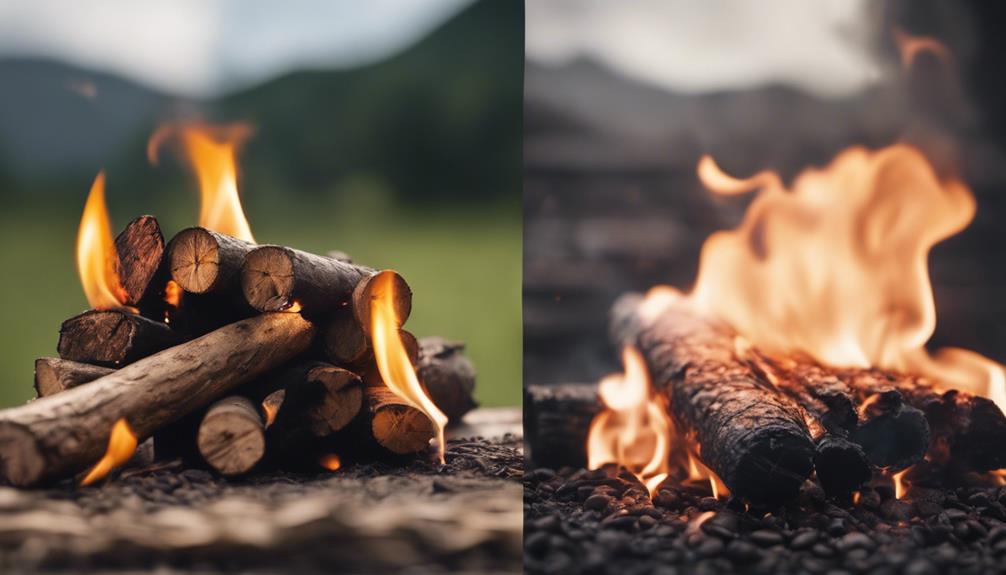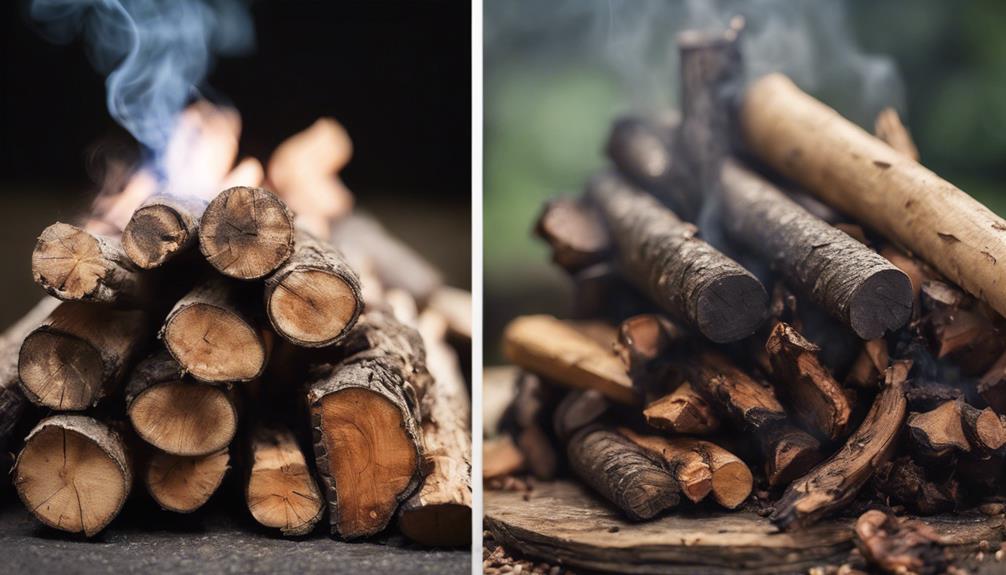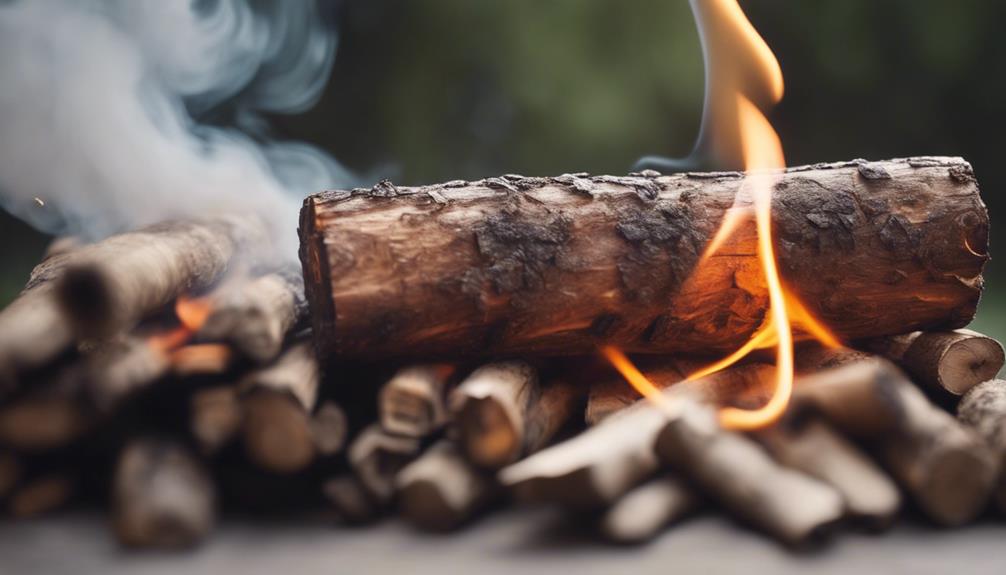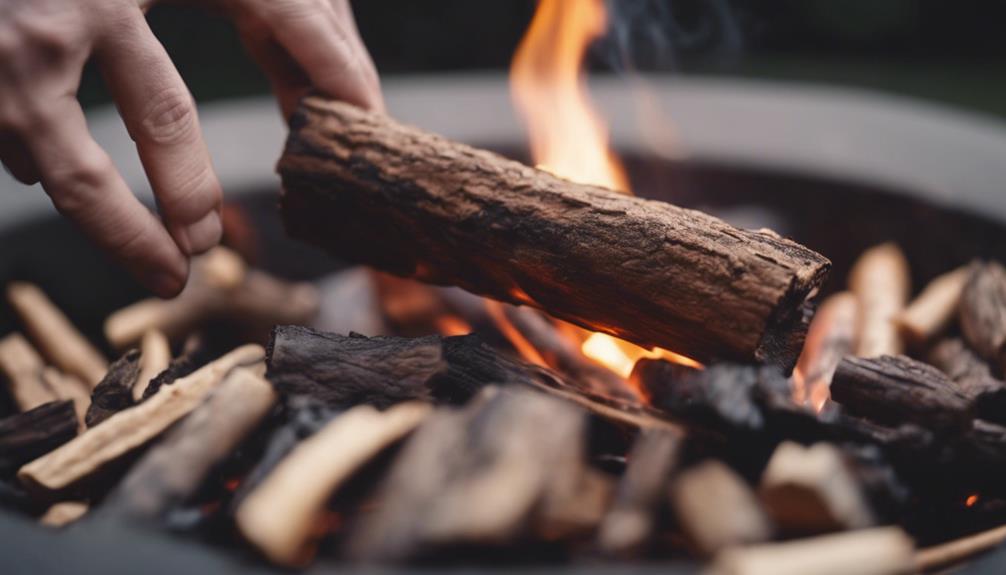Yes, coffee logs do emit smoke. While they are considered environmentally friendly and produce less smoke compared to some wood fuels, it’s important to be aware of their smoke levels and environmental impact. Understanding the emission levels can help you make informed decisions when burning coffee logs. Consider seeking guidance from a professional, especially in smoke control areas, for optimal usage. This knowledge can help maximize their efficiency and promote sustainable heating practices. For more information on the smoke production and environmental benefits of coffee logs, explore related topics.
Key Takeaways
- Coffee logs produce varying levels of smoke emissions.
- They may emit higher smoke levels than traditional wood logs.
- Seek professional advice for managing smoke emissions.
- Consider smoke control areas for burning coffee logs.
- Conduct an environmental impact assessment for smoke production analysis.
Environmental Impact of Coffee Logs
Coffee logs have been noted for their environmental impact, especially regarding smoke emissions and sustainability. While it's true that coffee logs produce more smoke and ash compared to traditional wood logs, they're still seen as an eco-friendly and sustainable alternative.
The environmental impact of coffee logs extends beyond just smoke emissions, with benefits such as reducing greenhouse gases and landfill waste. Third-party lab testing has also shown that coffee logs have low chlorine content, further supporting their eco-friendly claims.
When burning coffee logs, it's crucial to take into account the trade-off between smoke emissions and the positive environmental benefits they provide.
In light of the facts, it's important to acknowledge that while coffee logs may produce more smoke, their overall environmental impact is favorable. By choosing coffee logs as a sustainable alternative to traditional fuel sources, you're contributing to reducing greenhouse gas emissions and diverting waste from landfills.
Reflect on the broader environmental benefits of coffee logs beyond just smoke emissions when evaluating their impact.
Comparison With Traditional Fuel Sources

When comparing coffee logs with traditional fuel sources, consider the differences in smoke emissions and ash production. Coffee logs, while renewable, tend to burn with more smoke and produce higher levels of ash than traditional wood logs. This can potentially lead to issues with smoke emissions exceeding statutory limits in certain situations. Legislation often restricts the burning of certain fuels in households due to environmental concerns; however, coffee logs are typically exempted as they are considered a sustainable fuel source.
To visually represent the disparities between coffee logs and traditional fuel sources, take a look at the comparison table below:
| Aspect | Coffee Logs | Traditional Wood Logs |
|---|---|---|
| Smoke Production | Higher smoke emissions | Lower smoke emissions |
| Ash Generation | Increased ash production | Lesser ash residue |
If you reside in a smoke control area or have concerns about smoke emissions, seeking advice from a professional Chimney Sweep is advisable before opting to burn coffee logs.
Emission Levels of Coffee Logs

Coffee logs can indeed produce varying levels of smoke emissions when burned, potentially exceeding legal limits in certain situations. This can be a concern for both environmental and health reasons, as excessive smoke emissions can contribute to air pollution and pose respiratory risks. It is important for users of coffee logs to be aware of the potential for smoke emissions and take proper precautions to minimize their impact. Additionally, it is important to consider coffee’s impact on dental health, as frequent consumption can lead to staining and enamel erosion.
It's important to assess the environmental impact of these emissions, especially in smoke control areas, to guarantee compliance with regulations.
Conducting a smoke production analysis and environmental impact assessment can provide valuable insights into the suitability of using coffee logs as a renewable fuel source.
Smoke Production Analysis
The analysis of smoke production from burning coffee logs reveals important concerns regarding emission levels exceeding statutory limits. In smoke control areas, where restrictions aim to reduce air pollution, customers using coffee logs should exercise caution due to the potential for elevated smoke emissions.
While legislation typically restricts certain fuels for household burning, coffee logs are often exempted as a renewable fuel source. However, it's essential to conduct research to assess the appropriateness of burning coffee logs in your specific area, considering the impact on air quality.
Consulting a professional chimney sweep can provide guidance on potential concerns related to smoke emissions from coffee logs, ensuring that you're informed about the environmental implications of your fuel choices. By staying informed and seeking expert advice, you can make more environmentally conscious decisions when using coffee logs as a heating source.
Environmental Impact Assessment
Evaluating the environmental impact of coffee logs involves analyzing their emission levels to determine potential air quality implications. Smoke emissions from burning coffee logs have raised concerns due to the possibility of exceeding statutory limits set to regulate air pollution. Legislation exists to restrict the usage of certain fuels based on their emission levels, highlighting the importance of evaluating the environmental impact of coffee logs before use.
Customers residing in smoke control areas should exercise caution when considering the use of coffee logs to prevent potential violations of statutory limits and minimize environmental harm.
To address smoke emission concerns effectively, individuals are advised to consult with a professional chimney sweep. These experts can provide guidance on the safe and responsible use of coffee logs to ensure that emissions remain within acceptable limits.
Smoke Production From Coffee Logs

Coffee logs have been reported to potentially produce higher levels of smoke compared to traditional wood logs, raising concerns about exceeding statutory limits for emissions.
It's crucial for customers, especially those in smoke control areas, to exercise caution when burning coffee logs to avoid potential environmental impact and guarantee compliance with regulations.
Consulting a professional chimney sweep for guidance on managing smoke emissions while using coffee logs can provide valuable insights for maintaining a safe and environmentally friendly burning experience.
Smoke Levels Comparison
When considering burning coffee logs, be aware that they may produce higher levels of smoke compared to traditional wood logs. Smoke emissions from coffee logs have been reported to surpass legal limits in certain instances. If you reside in a smoke control area, exercise caution when opting to burn coffee logs. While legislation imposes restrictions on various household fuels, coffee logs are generally exempt due to their renewable nature. However, it is important to conduct thorough research to verify compliance with regulations specific to your area.
| Comparison | Coffee Logs | Wood Logs |
|---|---|---|
| Smoke Production | Higher levels | Lower levels |
| Emissions | May exceed limits | Within regulations |
| Compliance | Check regulations | Generally compliant |
Environmental Impact Assessment
Considering the environmental impact of smoke production from burning coffee logs is vital for making informed decisions regarding their usage. Reports have indicated that smoke emissions from burning coffee logs might surpass statutory limits, potentially leading to environmental concerns. Moreover, claims suggest that coffee logs produce more smoke and ash in comparison to traditional wood logs, raising questions about their sustainability.
For customers residing in smoke control areas, it's important to conduct thorough research on the appropriateness of burning coffee logs to mitigate potential negative effects on air quality. Seeking guidance from a professional chimney sweep is advisable to address any uncertainties regarding smoke emissions and to ensure compliance with regulations.
Benefits of Smokeless Burning

For cleaner and more eco-friendly burning, opting for fuel sources with reduced smoke emissions can enhance your fire experience. When it comes to choosing the right wood for your burners, it's essential to select options that are appropriate for your appliance.
While coffee logs may not be completely smokeless, they offer a cleaner burn compared to some traditional wood fuels. Despite producing a moderate amount of smoke, coffee logs provide a sustainable alternative for burning, emitting less smoke than some other types of fuel.
The subtle coffee aroma they create can add to the cozy atmosphere of your fire. When burned properly, coffee logs offer a unique and eco-friendly way to enjoy a fire with minimal smoke emissions.
Sustainability of Coffee Logs

Coffee logs exhibit sustainability through their production process and environmental impact. Here are some key points to ponder regarding the sustainability of coffee logs:
- Recycled Material: Coffee logs are a sustainable fuel option made from recycled coffee grounds, contributing to waste reduction.
- Low Emissions: Burning coffee logs emits 80% fewer greenhouse gases compared to disposing of coffee grounds in landfills, making them a greener alternative.
- Environmental Benefits: While not completely smokeless, coffee logs offer lower emissions and environmental advantages over traditional wood logs.
- Eco-Conscious Choice: The minimal carbon footprint associated with using coffee logs aligns with the principles of sustainability and circular energy use by repurposing coffee waste.
These factors highlight the eco-friendly nature of coffee logs, making them a popular choice for those seeking a sustainable and low-emission heating option.
Frequently Asked Questions
Are Coffee Logs Smoke Free?
Coffee Logs aren't smoke-free. While safe to burn, they can produce more smoke than traditional wood logs. It's important to guarantee proper ventilation when using Coffee Logs.
Despite not being smokeless, they offer eco-friendly and efficient burning. Be mindful of the smoke output when using Coffee Logs indoors or in enclosed spaces to maintain air quality and safety.
Do Coffee Logs Burn With a Flame?
Coffee logs do indeed burn with a flame when ignited. The flame produced by coffee logs is similar to that of wood logs, providing a cozy and warm ambiance.
Depending on the conditions, the intensity of the flame from burning coffee logs can vary. This variation can create a visually appealing and comforting fire, enhancing the ambiance of your space.
Do Coffee Logs Produce Carbon Monoxide?
Coffee logs don't produce carbon monoxide when burned properly. They're designed to burn efficiently, minimizing emissions like carbon monoxide.
It's important to prioritize proper ventilation when using coffee logs to reduce any potential smoke buildup. While coffee logs may emit smoke during combustion, they're considered safe for use and are an environmentally friendly fuel option.
Just remember to follow safety guidelines and enjoy the eco-friendly benefits of using coffee logs for heating.
Do Heat Logs Give off Smoke?
Heat logs do give off smoke when burned. While they're a convenient and efficient fuel source, they do produce some smoke as they combust.
This smoke may vary depending on the composition of the heat logs and can be more or less than traditional wood logs.
It's crucial to maintain proper ventilation when using heat logs to minimize any potential smoke buildup in your living space.
Conclusion
To sum up, coffee logs don't produce smoke when burned, making them a cleaner and more environmentally friendly alternative to traditional fuel sources.
The adage 'where there's smoke, there's fire' doesn't apply in this case, as coffee logs offer a smokeless burning experience.
With their sustainable production and low emission levels, coffee logs are a practical choice for those looking to reduce their carbon footprint without sacrificing warmth and comfort.









